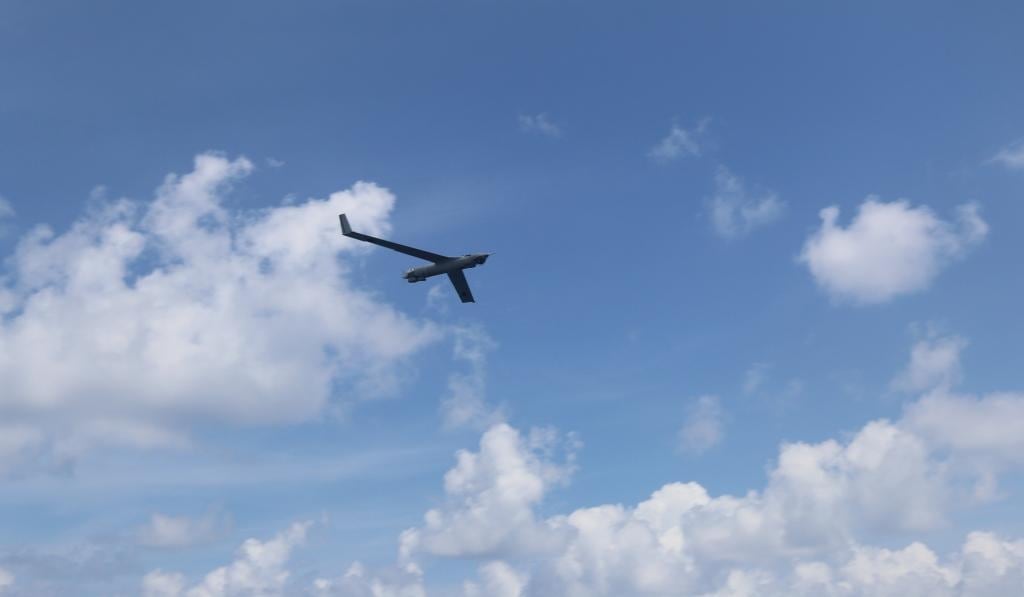WASHINGTON ― The U.S. unveiled nearly $3 billion in new aid for Ukraine and 18 of its neighbors on Thursday as Defense Secretary Lloyd Austin met with allies in Germany and Secretary of State Antony Blinken made an unscheduled visit to Kyiv.
Alongside a $675 million package of heavy weaponry, ammunition and armored vehicles for Ukraine, the administration notified Congress of its intent to make $2.2 billion in new Foreign Military Financing available. The recipients include NATO members and Eastern European security partners the State Department called “most potentially at risk for future Russian aggression.”
The prospect of financing options for U.S. weaponry ups the ante in a long-standing sales push by Washington to be first in line when former Warsaw Pact countries flush the last stockpiles of Soviet gear out of their arsenals. Recent donations by those countries to Ukraine have made the need to backfill their inventories all the more urgent.
It also sets up a competition, at least implicitly, with arms makers in Europe, who are vying for the business, as well as with the European Union as a bloc, where officials are scrambling to accelerate joint procurement of weapons and ammunition.
At the start of a Thursday meeting with senior officials from allied countries at the United States’ Ramstein Air Base in Germany, Austin announced that in the coming weeks, the U.S. will host “senior armaments directors” from the member nations of the Ukraine Defense Contact Group. “They will discuss how our defense industrial bases can best equip Ukraine’s future forces with the capabilities that they need.”
“Many countries continue to dig deep and provide equipment out of their own military stocks. That can mean purchasing new equipment from their own defense industries, or even purchasing new equipment from other countries that they can send to Ukraine,” Austin told the meeting, which was attended by NATO Secretary-General Jens Stoltenberg and Ukraine’s defense minister as well as officials from allied countries.
Austin said the countries working together should be able to “streamline processes,” shorten acquisition timelines and share best practices. The remarks come as Austin has launched an effort within the Pentagon to fast-track the foreign military sales process.
RELATED

Foreign Military Financing generally allows recipients to purchase U.S.-made defense equipment, and the State Department, which administers FMF, said Thursday the aid it is meant to help countries backfill weapons and equipment they have sent to Ukraine.
Given the urgency of Ukraine’s fight to repel Russia’s invasion, the loans can also be used in the short term to fund the kinds of Soviet-era weapons, parts and ammunition common to Eastern Europe. The State Department envisions Ukraine using the money after the war to rebuild its military training ability.
“In the immediate term, FMF will be used to cover wartime requirements of the AFU to provide them with means necessary to win the war against the Russian Federation,” a State Department spokesman said, using an acronym for Ukraine’s armed forces.
Of the loans, $1 billion will be made available for Ukraine. The rest will be divided among 18 other countries: Albania, Bosnia and Herzegovina, Bulgaria, Croatia, the Czech Republic, Estonia, Georgia, Greece, Kosovo, Latvia, Lithuania, Moldova, Montenegro, North Macedonia, Poland, Romania, Slovakia, and Slovenia.
The loans “may support” purchases of a broad range of materiel, from high-end integrated air and missile defense systems and fixed-wing aircraft like the F-16 to small arms and ammunition, the State Department said.
And recipients may use the loans for a broad range of reasons: to “deter and defend against emergent threats to their sovereignty and territorial integrity, increase professionalization and modernization of their security forces, enhance partner military integration with NATO, and strengthen defensive cyber, hybrid warfare, and conventional capabilities to counter Russian influence and aggression,” the State Department said.
Though Congress must approve the proposal, it has already appropriated the money through the $40 billion Ukraine aid package from May and the State Department’s standing fund for countering Russian influence.
The $675 million package of U.S. military equipment set to be drawn from U.S. military stockpiles includes more High-speed Anti-radiation missiles, meant to hone in on Russian artillery, as well ammunition for High Mobility Artillery Rocket Systems, or HIMARS, sent to Ukraine.
That package also includes 105mm howitzers, 36,000 artillery rounds, 100 Humvees, armored ambulances, anti-tank systems and more.
Austin said the group gathered to renew its long-term commitment to military support.
“We will work together to help integrate Ukraine’s capabilities and bolster its joint operations for the long haul,” Austin told the meeting. “We’ll work together to upgrade our defense industrial bases to meet Ukraine’s requirements for the long haul. And we’ll work together for production and innovation to meet Ukraine’s self-defense needs for the long haul.”
Austin said “the war is at another key moment,” with Ukrainian forces beginning their counteroffensive in the south of the country.
“Now we’re seeing the demonstrable success of our common efforts on the battlefield,” he added. “The face of the war is changing and so is the mission of this contact group,”
The U.S. has committed $14.5 billion in security assistance to Ukraine since the beginning of Russia’s invasion on February 24.
Joe Gould was the senior Pentagon reporter for Defense News, covering the intersection of national security policy, politics and the defense industry. He had previously served as Congress reporter.
Sebastian Sprenger is associate editor for Europe at Defense News, reporting on the state of the defense market in the region, and on U.S.-Europe cooperation and multi-national investments in defense and global security. Previously he served as managing editor for Defense News. He is based in Cologne, Germany.





